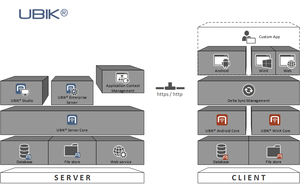Difference between revisions of "HowTo:Debugging UBIK"
m (NWE moved page Debug a Customizing to Debugging UBIK) |
(→Debugging {{UBIK}}) |
||
| Line 26: | Line 26: | ||
# '''Retest''': Test the fix | # '''Retest''': Test the fix | ||
| − | == Debugging {{UBIK}} == | + | == Debugging a {{UBIK}} project == |
<!-- DO NOT REMOVE THIS -->{{Template:HowTo/Begin}}<!-- DO NOT REMOVE THIS --> | <!-- DO NOT REMOVE THIS -->{{Template:HowTo/Begin}}<!-- DO NOT REMOVE THIS --> | ||
| + | |||
| + | [[Category:Best Practices (internal)|Debug a Customizing]] | ||
| + | [[Category:Resources (internal)|Debug a Customizing]] | ||
| + | |||
= Reproduction = | = Reproduction = | ||
Revision as of 13:27, 15 February 2024
One of the most complex challenges when working on any software project is to debug unintended behavior. In UBIK®, there is an inherent structure to every project, which we can exploit for debugging. Let's find out, how.
Quick-fix check list
Many issues can be resolved by going through the following check list.
- Check settings and configurations for typos, missing entries and other errors
- Restart UBIK® Studio and reconnect to your DB to avoid caching issues
- Check whether all plugins were loaded correctly
- In case the custom code was changed, or UBIK® was upgraded to a new version:
- Compile and publish the customizing (F6)
- Restart the Enterprise Service
- Restart all Web Services
- In case the data model for the client was changed:
- Rebuild and publish the ACM meta definitions using the ACM manager
- Restart all web services
- Restart the UBIK® client application to make sure new meta definitions and content are received
A general policy for debugging
Debugging can be approached methodically. Here's a basic plan for debugging software.
- Reproduction: Get all available, relevant information about the bug and confirm the problem in a test setup
- Inspection: Inspect the actual behavior to understand the cause
- Fix: Design and implement a solution
- Retest: Test the fix

